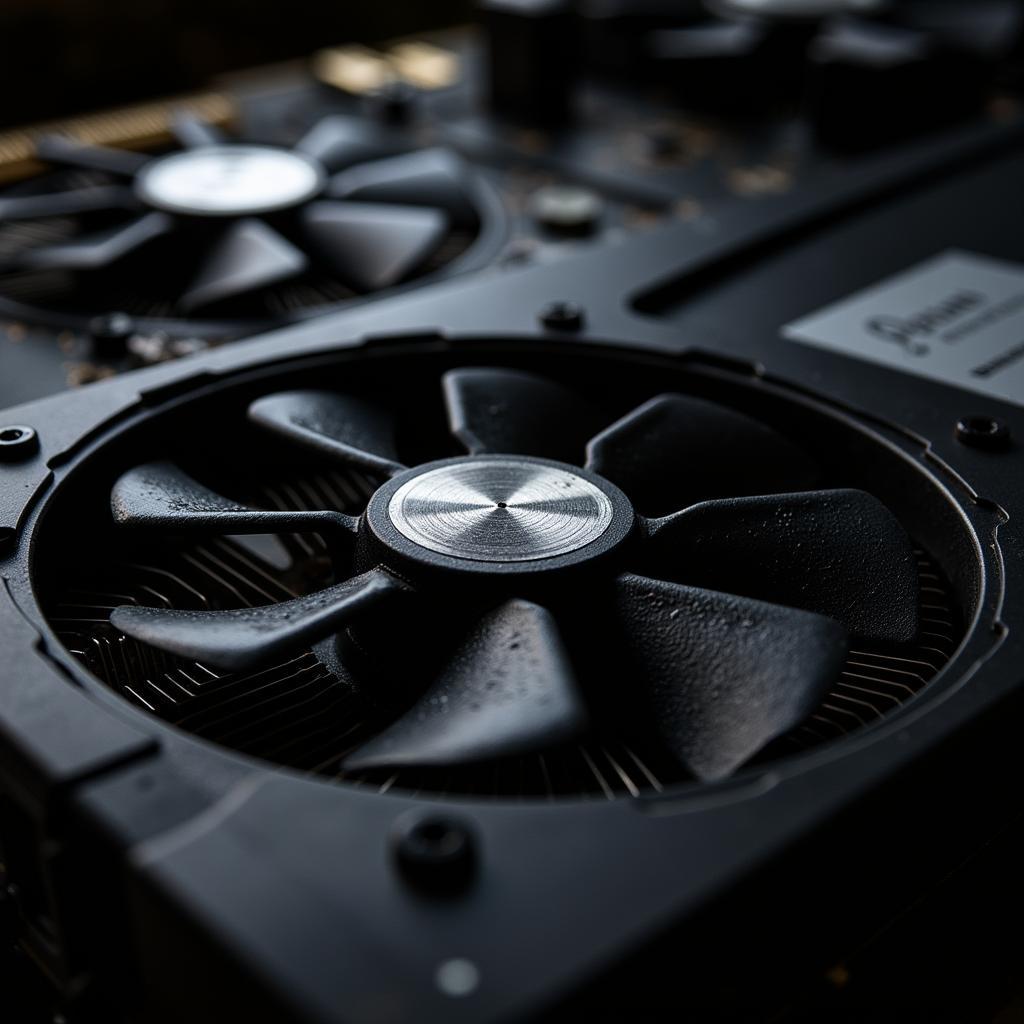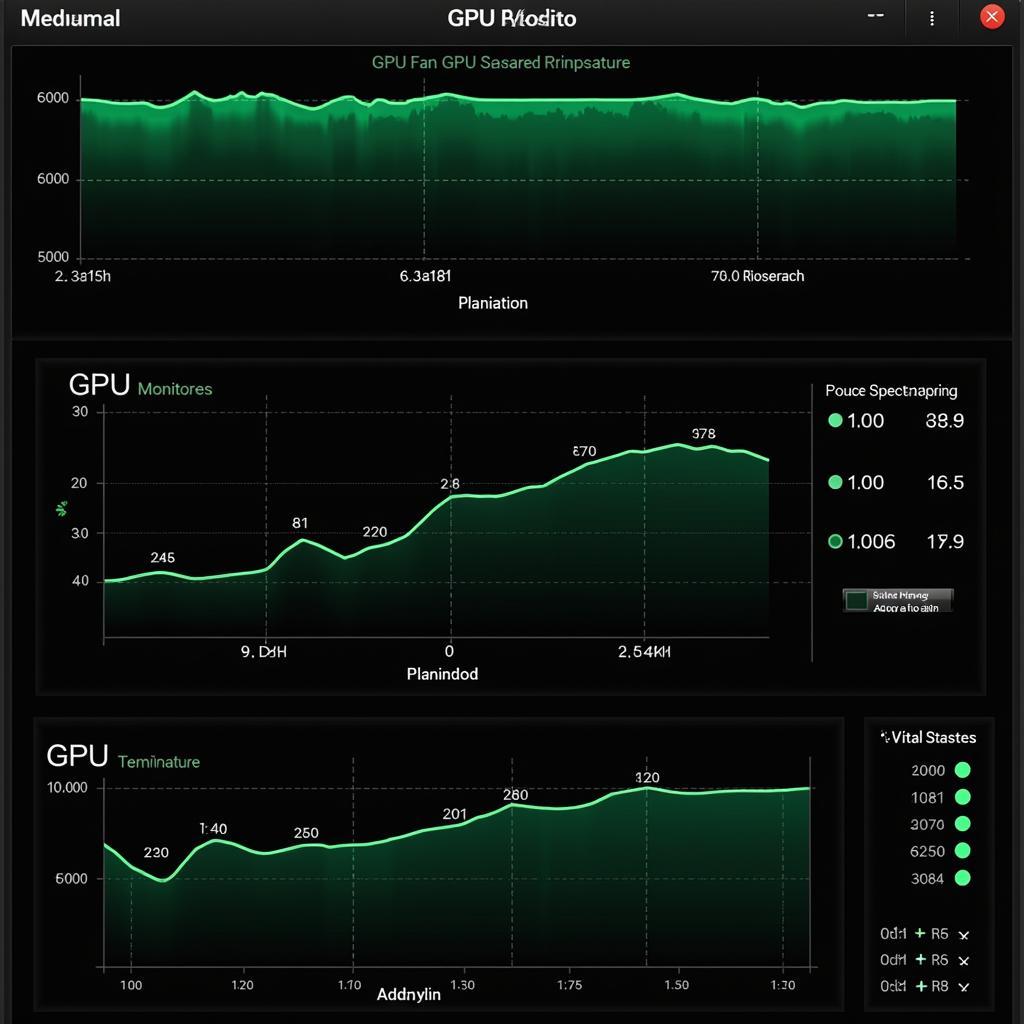A non-spinning GPU fan can be alarming, especially when you’re about to dive into a graphically intense gaming session. While a silent GPU might seem desirable at first, it could indicate an underlying issue that needs addressing. This article delves into the reasons why your GPU fan might not spin until a game launches and provides you with effective solutions to get those fans whirring as they should.
 GPU fan not spinning on a graphics card
GPU fan not spinning on a graphics card
Why Your GPU Fan Stays Off Until Gaming
Modern GPUs are designed with intelligent fan control mechanisms that prioritize both cooling efficiency and noise reduction. Here’s why your GPU fan might remain dormant until you fire up a game:
-
Low Temperature Threshold: GPUs are programmed to keep fan speeds low or even off when temperatures are below a certain threshold. This is typically around 50-60°C (122-140°F), depending on the model. When you launch a game, the GPU workload increases, generating more heat. Once the temperature surpasses the set threshold, the fans kick in to prevent overheating.
-
Passive Cooling Mode: Many graphics cards utilize passive cooling when idle or under low load. This means the fans remain off, relying on the heatsink to dissipate heat naturally. This silent operation is energy-efficient and reduces fan wear and tear.
-
Driver and Software Settings: Your GPU driver software often allows you to customize fan curves and temperature targets. If these settings are misconfigured, it’s possible the fan activation temperature is set too high, causing the fans to remain off until the GPU is under heavy load.
-
Fan Curve Issues: A fan curve dictates the relationship between GPU temperature and fan speed. If the fan curve is set too aggressively, the fans might not spin until the GPU reaches a significantly high temperature.
 Monitoring GPU temperature with specialized software
Monitoring GPU temperature with specialized software
How to Troubleshoot a GPU Fan That’s Not Spinning
If you suspect your GPU fan isn’t functioning correctly, here are troubleshooting steps to take:
-
Monitor GPU Temperature: Download a reliable hardware monitoring tool like HWMonitor or MSI Afterburner. These tools provide real-time data on your GPU’s temperature, fan speed, and other vital parameters. Run a stress test or a demanding game and observe the temperature readings. If the temperature rises rapidly and exceeds 80°C (176°F) while the fan remains off, it’s a sign of a problem.
-
Check Fan Connections: Power down your computer, unplug it, and open the case. Carefully inspect the fan’s connection to the graphics card. Ensure the connector is securely fastened. If your GPU has multiple fan headers, verify that all fans are properly connected.
-
Update or Reinstall GPU Drivers: Outdated or corrupted drivers can disrupt fan control mechanisms. Visit the website of your GPU manufacturer (NVIDIA, AMD, or Intel) and download the latest drivers for your specific graphics card model. Uninstall the existing drivers and install the new ones.
-
Adjust Fan Curve Settings: Access your GPU driver software and locate the fan control settings. Set a more conservative fan curve, gradually increasing fan speed as the temperature rises. This ensures timely fan activation and prevents overheating.
-
Test with a Different Application: Try running a different demanding application or benchmark tool. This helps determine if the issue is specific to a particular game or a system-wide problem.
When to Seek Professional Help
If the troubleshooting steps don’t resolve the issue, it’s crucial to seek professional assistance. Contact the manufacturer of your graphics card or a qualified computer technician for further diagnosis and repair. Ignoring a persistent fan issue can lead to GPU damage due to overheating.
 A technician inspecting a graphics card for potential faults
A technician inspecting a graphics card for potential faults
Conclusion
While a GPU fan remaining inactive until gaming is often part of the designed functionality, it’s essential to be aware of potential issues. By monitoring your GPU temperature, keeping drivers updated, and configuring fan settings appropriately, you can ensure optimal cooling performance and prolong the lifespan of your valuable graphics card.


